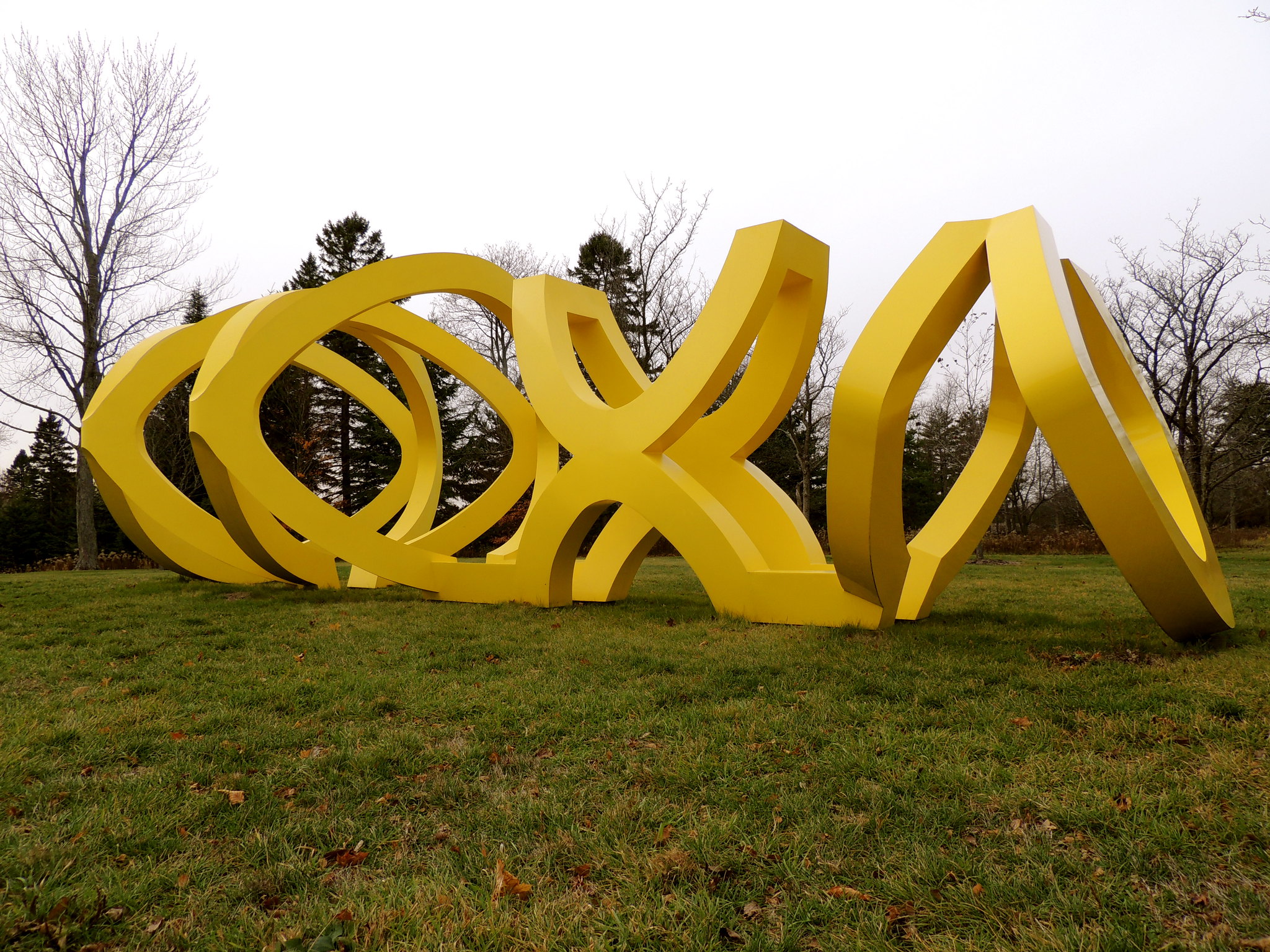The Lynden Sculpture Garden (formerly the Bradley Sculpture Garden) is an outdoor sculpture garden located at 2145 West Brown Deer Road. The forty-acre property is home to over fifty sculptures, a three-acre lake, gardens, woodlands, and a renovated 1860s farmhouse. The Lynde and Harry Bradley Foundation administers the garden.[1]
In 1928, Harry Lynde Bradley, co-founder of the Allen-Bradley Company, and his wife Margaret purchased a forty-acre farm in River Hills. Intending for the property to be a private residence, the Bradleys invested considerable time and money into converting the farmland into an English-style country garden. Chicago landscape architects Langford and Moreau were tasked with transforming the Bradleys’ newly purchased farm. The centerpiece of their design was an artificial lake, complete with a waterfall and rustic wooden bridge meant to resemble the municipal grounds in Kansas City that Harry Lynde Bradley recalled from his childhood. In 1934, the Bradleys hired Carl Urban to oversee the planting of extensive garden beds, including a botanical garden that was discontinued by the start of World War II.[2]
The property began its path to becoming an outdoor sculpture garden in 1962, when Margaret purchased Bremen Town Musicians, a large bronze statue by Gerhard Marcks. Three years later, Harry died and Margaret began acquiring more works for her private sculpture garden while also developing a close relationship with the Milwaukee Art Museum. By the time of her death in 1978, the sculpture garden included sixty works by over forty artists.[3]
In 2007, the name of the property was changed to the Lynden Sculpture Garden. In 2009 the Bradley Foundation hired an executive director and opened the grounds to the public. The re-imagining of the sculpture garden also included hiring Uihlein-Wilson Architects to renovate the original 1860s farmhouse using sustainable building practices and update the facilities to house classrooms, conference rooms, studios, and a gallery. The Lynden Sculpture Garden officially opened to the public on June 2, 2010.[4]
Footnotes [+]
- ^ “A Brief History of Lynden,” Lynden Sculpture Garden website, accessed July 3, 2019; Diane Buck and Virginia Palmer, Outdoor Sculpture in Milwaukee: A Cultural and Historical Guidebook (Madison, WI: State Historical Society of Wisconsin, 1995), 167.
- ^ “A Brief History of Lynden”; Buck and Palmer, Outdoor Sculpture in Milwaukee, 167.
- ^ Buck and Palmer, Outdoor Sculpture in Milwaukee, 168.
- ^ Mary Louise Schumacher, “Bradley Sculpture Garden Preparing for Big Changes,” Milwaukee Journal Sentinel, November 30, 2009,accessed July 5, 2019; Julie Lawrence, “Lynden Sculpture Garden Shares Its Beauty with the Rest of Us,” OnMilwaukee.com, May 11, 2010, accessed July 5, 2019.
For Further Reading
Buck, Diane M., and Virginia A. Palmer. Outdoor Sculpture in Milwaukee: A Cultural and Historical Guidebook. Madison, WI: State Historical Society of Wisconsin, 1995.

0 Comments
Please keep your community civil. All comments must follow the Encyclopedia of Milwaukee Community rules and terms of use, and will be moderated prior to posting. Encyclopedia of Milwaukee reserves the right to use the comments we receive, in whole or in part, and to use the commenter's name and location, in any medium. See also the Copyright, Privacy, and Terms & Conditions.
Have a suggestion for a new topic? Please use the Site Contact Form.